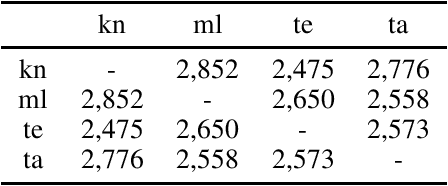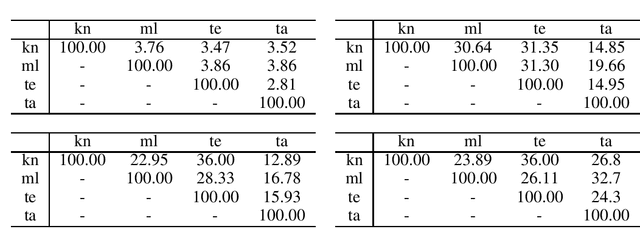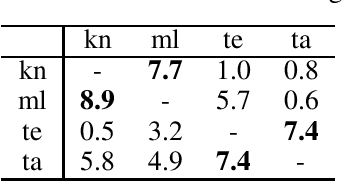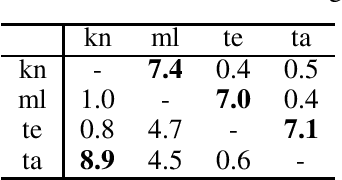Danish Ebadulla
Efficient Multi Subject Visual Reconstruction from fMRI Using Aligned Representations
May 03, 2025Abstract:This work introduces a novel approach to fMRI-based visual image reconstruction using a subject-agnostic common representation space. We show that the brain signals of the subjects can be aligned in this common space during training to form a semantically aligned common brain. This is leveraged to demonstrate that aligning subject-specific lightweight modules to a reference subject is significantly more efficient than traditional end-to-end training methods. Our approach excels in low-data scenarios. We evaluate our methods on different datasets, demonstrating that the common space is subject and dataset-agnostic.
Normalized Space Alignment: A Versatile Metric for Representation Analysis
Nov 07, 2024Abstract:We introduce a manifold analysis technique for neural network representations. Normalized Space Alignment (NSA) compares pairwise distances between two point clouds derived from the same source and having the same size, while potentially possessing differing dimensionalities. NSA can act as both an analytical tool and a differentiable loss function, providing a robust means of comparing and aligning representations across different layers and models. It satisfies the criteria necessary for both a similarity metric and a neural network loss function. We showcase NSA's versatility by illustrating its utility as a representation space analysis metric, a structure-preserving loss function, and a robustness analysis tool. NSA is not only computationally efficient but it can also approximate the global structural discrepancy during mini-batching, facilitating its use in a wide variety of neural network training paradigms.
Exploring Linguistic Similarity and Zero-Shot Learning for Multilingual Translation of Dravidian Languages
Aug 10, 2023



Abstract:Current research in zero-shot translation is plagued by several issues such as high compute requirements, increased training time and off target translations. Proposed remedies often come at the cost of additional data or compute requirements. Pivot based neural machine translation is preferred over a single-encoder model for most settings despite the increased training and evaluation time. In this work, we overcome the shortcomings of zero-shot translation by taking advantage of transliteration and linguistic similarity. We build a single encoder-decoder neural machine translation system for Dravidian-Dravidian multilingual translation and perform zero-shot translation. We compare the data vs zero-shot accuracy tradeoff and evaluate the performance of our vanilla method against the current state of the art pivot based method. We also test the theory that morphologically rich languages require large vocabularies by restricting the vocabulary using an optimal transport based technique. Our model manages to achieves scores within 3 BLEU of large-scale pivot-based models when it is trained on 50\% of the language directions.
 Add to Chrome
Add to Chrome Add to Firefox
Add to Firefox Add to Edge
Add to Edge